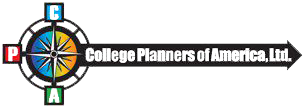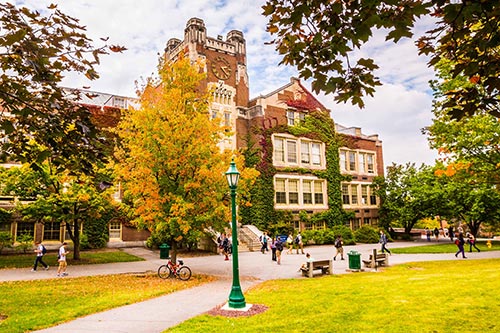Private student loans are financial products offered by private lenders to help students finance their college education. They are distinct from Federal student loans provided by the government. Private loans have the potential to fill funding gaps when Federal student loan options are exhausted, offering competitive interest rates and flexible repayment terms to students with good credit histories. However, the complexities and risks of private loans raise concerns, making it crucial for borrowers to weigh their options fully before committing to these obligations.
One advantage of private student loans is the possibility of lower interest rates relative to Federal loans, particularly for borrowers with strong credit scores. Additionally, private lenders may provide diverse loan options, including variable and fixed interest rates, which can be tailored to individual financial situations. Quick access to funds is another appealing feature, with many lenders offering streamlined online applications that expedite the borrowing process.
These benefits may be offset by drawbacks such as higher interest rates for those with weak credit. They also lack borrower protections like income-driven repayment plans or forbearance options. Borrowers who face challenges due to poor credit history are required to have a cosigner for the loan.
Private loans typically come with shorter repayment terms, potentially leading to higher monthly payments that can strain a borrower’s budget. In addition, the amount borrowed through private loans may have a negative impact on eligibility for Federal financial aid, complicating the overall funding situation for a student.
In summary, while private student loans offer a valuable source of funds for education, they carry risks and limitations that warrant thorough examination. Understanding the balance of advantages and disadvantages is essential for students navigating their funding options and seeking to avoid the burden of excessive debt.
Advantages of Private Student Loans
Private student loans offer several benefits that make them an attractive option. These include competitive interest rates, flexible loan options, and the potential for savings.
- Competitive Interest Rates
One of the primary advantages of private loans is the potential for lower interest rates compared to other forms of borrowing. For borrowers with excellent credit, private lenders often extend competitive rates, which may even be lower than Federal loan rates. This can lead to considerable savings over the life of the loan, especially if a borrower chooses a short repayment term.
- Flexible Loan Options
Private loans provide a range of options that can be tailored to meet individual needs. Borrowers have the choice between fixed and variable interest rates, allowing them to select a plan that aligns with their financial strategy. Additionally, some lenders offer repayment options that allow students to avoid making payments while still in school, as is the case with Federal direct subsidized loans.
- Access to Funding After Federal Loans
Private loans are particularly useful for students who have exhausted their Federal student loan options. Once Federal loans have been fully utilized, private loans can provide necessary funding to cover remaining educational expenses.
- Potential for Cosigner Release
Many private lenders allow for the possibility of cosigner release after a borrower demonstrated a strong repayment history and met specific credit criteria. This feature can benefit students who initially needed a parent to cosign for a loan.
- Quick Access to Funds
The application process for private student loans is quicker and less cumbersome than that for Federal loans. Many lenders offer streamlined online applications that can lead to faster approval and access to funds, which is crucial for students needing immediate financial assistance.
Disadvantages of Private Student Loans
While private loans can be beneficial for some borrowers, they have disadvantages that potential applicants should also consider.
- Higher Interest Rates
One of the primary drawbacks of private loans is that they often carry higher interest rates than Federal student loans. This is particularly affects borrowers with less-than-perfect credit, as private lenders generally base their rates on creditworthiness. As interest rates rise, borrowers may find that the costs associated with private loans become significantly more burdensome over time.
- Limited Protections
Private student loans typically offer fewer borrower protections than Federal loans. For example, many private lenders do not provide forbearance options or income-driven repayment plans. This inflexibility can increase difficulties for borrowers who encounter unexpected financial hardships.
- Credit Checks and Cosigner Requirements
Unlike most Federal student loans, which do not require a credit check, private student loans involve a credit evaluation. This means that borrowers with poor credit histories may face higher interest rates or be denied outright. Additionally, many borrowers, including those without any established credit, may need a cosigner to secure a loan. This not only places additional financial responsibility on the cosigner, usually a parent, but can also negatively impact the cosigner’s credit score if the student borrower defaults on the loan.
- Shorter Repayment Terms
Private loans may be structured with shorter repayment terms compared to Federal loans. While this can sometimes lead to lower overall interest payments if the loan is paid off on time, it can also result in higher monthly payment amounts, putting further strain on the borrower’s budget.
- Impact on Financial Aid Eligibility
Borrowing through private lenders can negatively impact a student’s eligibility for Federal financial aid. The amount borrowed through private loans could subtract from what FAFSA defines as a student’s financial need, potentially reducing the amount of Federal student aid available to the student.
- Loan Balance Upon Death
If the borrower dies while a balance remains on the loan, the cosigner, if any, must repay the balance in full to the lender.
Comparison with Federal Student Loans
Private and Federal loans are both options for financing a college education, each with distinct advantages and disadvantages. Understanding the differences is essential for students and families making financial decisions.
Federal Student Loans
Federal student loans are government-funded loans available to students that usually feature lower interest rates and more favorable repayment terms than private loans. There are two main types of Federal loans: subsidized and unsubsidized. Subsidized loans are designed for students with “exceptional financial need” in which the government pays the interest while the borrower is in school. With unsubsidized loans, interest accrues from the issuance of the loan. They are available to students regardless of financial need.
Federal loans generally offer flexible repayment options, including income-driven repayment plans, and the possibility of loan forgiveness through programs like the Public Service Loan Forgiveness (PSLF) program. Furthermore, Federal loans do not require a credit check, making them available to a broader range of students. If the borrower of a Parent Plus or Direct Loan dies, the balance of the loan is forgiven.
Private Student Loans
In contrast, private student loans are offered by financial institutions and lenders with varying interest rates and terms. While private loans can fill the gap for students who have exhausted their Federal loan options, they often come with higher interest rates, especially for students with low credit scores.
Private lenders typically impose stricter eligibility requirements, including family credit history and income verification, which limit access for some borrowers. Furthermore, private loans generally offer fewer repayment options compared to Federal loans and do not include provisions for loan forgiveness.
Key Considerations
In comparing private loans to Federal loans, several factors should be taken into account:
- Interest Rates: Federal loans usually have lower interest rates, making them cost less than private loans over the long term.
- Repayment Flexibility: Federal loans offer more repayment plans as well as options for deferment and forbearance for students in a range of financial circumstances.
- Credit Requirements: Federal loans do not require a credit check, while private loans do, posing a barrier for some students.
- Loan Limits: Private loans can offer higher borrowing limits, which may be beneficial for students with higher than average tuition costs.


Recent Comments